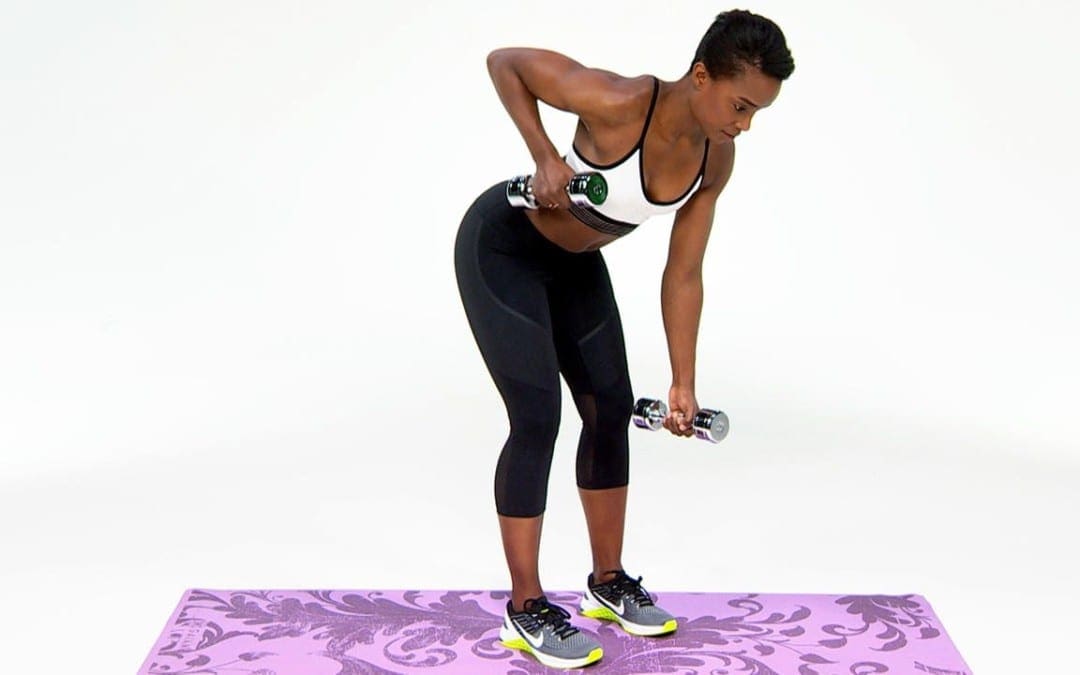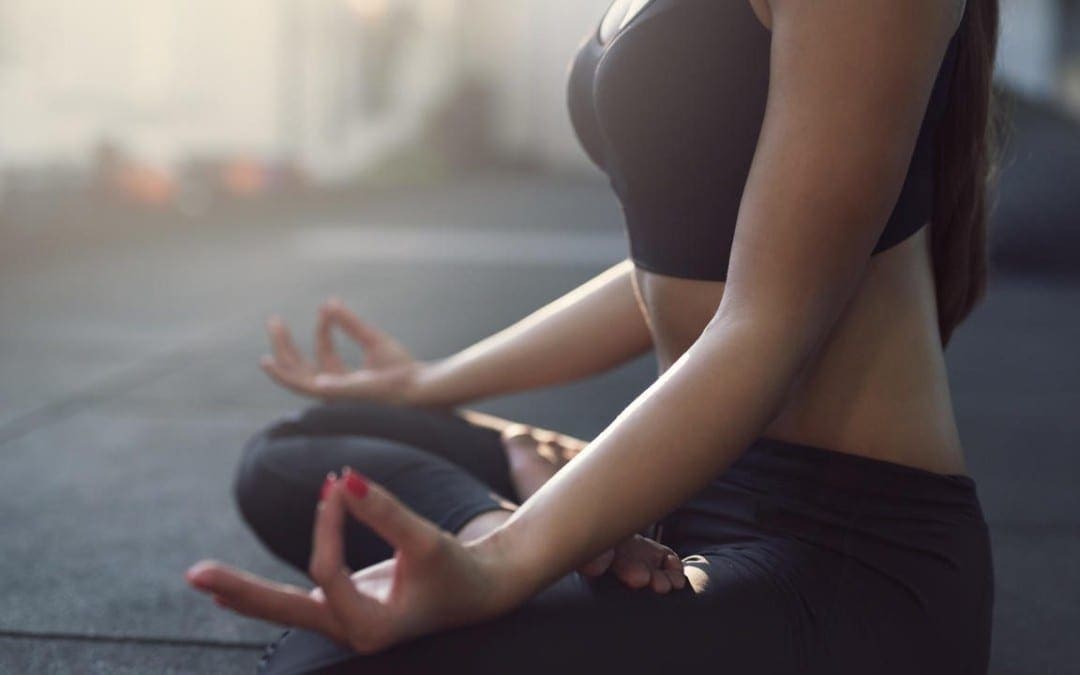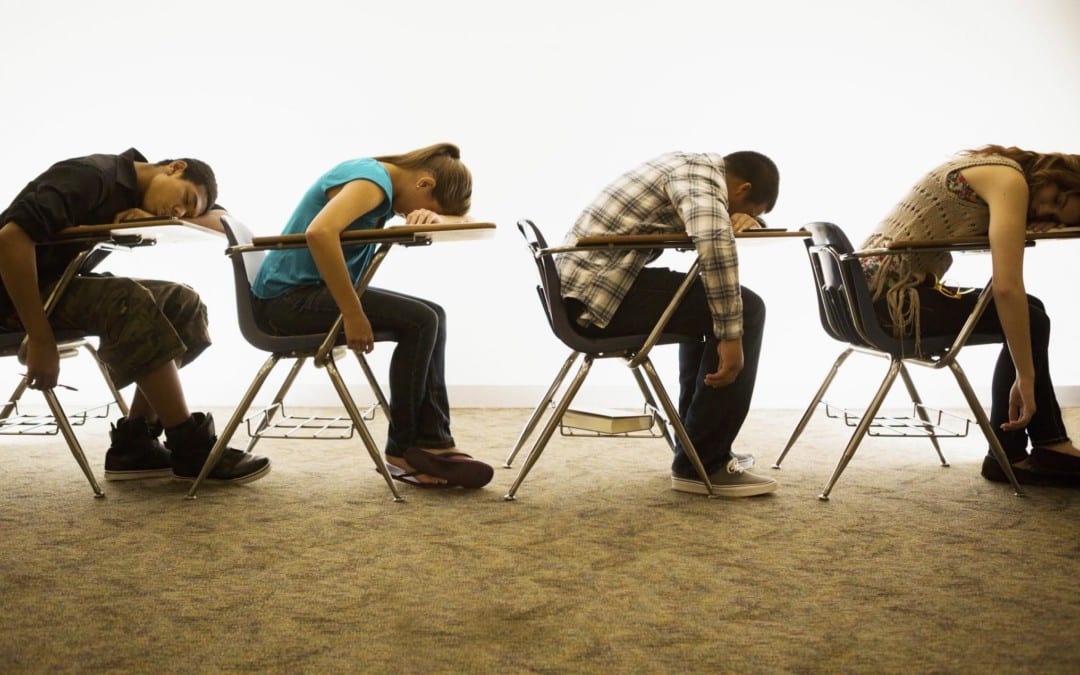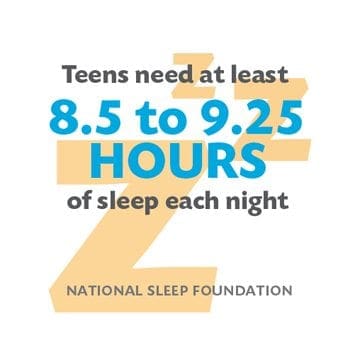Fitness
Back and Spinal Fitness at PUSH as Rx leads the field with a laser focus on supporting our youth sports programs. The PUSH-as-Rx System is a sport-specific athletic program designed by a strength-agility coach and physiology doctor with a combined 40 years of experience working with extreme athletes.
The program is the multidisciplinary study of reactive agility, body mechanics, and extreme motion dynamics at its core. A clear quantitative picture of body dynamics emerges through continuous and detailed assessments of the athletes in motion and under directly supervised stress loads.
Exposure to the biomechanical vulnerabilities is presented to our team. Immediately, we adjust our methods for our athletes to optimize performance. This highly adaptive system with continual dynamic adjustments has helped many of our athletes return faster, stronger, and ready post injury while safely minimizing recovery times.
Results demonstrate clear improved agility, speed, decreased reaction time with greatly improved postural-torque mechanics. PUSH-as-Rx offers specialized extreme performance enhancements to our athletes no matter the age.

by Dr Alex Jimenez DC, APRN, FNP-BC, CFMP, IFMCP | Fitness, Health, Wellness
Nothing says summer like sleeveless tops and strapless dresses. But the idea of showing so much skin can be daunting. Our solution? Get started early with these six sculpting exercises from Nike trainer Lauren Williams. They will sculpt your upper body stat, so you’ll feel good at your next wedding or outdoor social event. Watch this video and try Lauren’s best get-fit moves for awesome arms, strong shoulders, and a beautiful back.
1. Wide hand walkout: Start in a plank position with your hands directly underneath your shoulders. From here, walk your hands out to a wide push-up position. Return to plank and repeat.
2. Tricep drops: Start in a plank position with your hands slightly in front of your shoulders. Gently drop your elbows to the ground. Return to high plank and repeat.
3. Front and side dumbbell arm raises: Stand tall with a dumbbell in each hand. Raise both to chest level to create a 90-degree angle with your torso, then lower back down. Next, raise both arms out straight to each side on the diagonal, stopping at shoulder level to create an open T shape with the arms, palms facing each other. Lower back down and continue to repeat this combination, moving the arms up and down as they extend in front of you and to the sides.
RELATED: Get Sculpted Shoulders and Toned Arms With Emily Skye’s Upper-Body Workout
4. Bent-over tricep kickbacks: From standing, lean your upper body forward so you’re slightly bent over with a dumbbell in each hand. Bend arms at the elbows until dumbbells reach chest, then straighten arms back out as the weights reach back behind the upper body. Repeat.
5. Bent-over alternating rows: From standing, lean your upper body forward so you’re slightly bent over with a dumbbell in each hand. First raise your right arm up so your elbow bends deeply and the weight is next to your chest. Return arm down to center, then repeat the row movement on the left arm. Continue alternating arms.
6. Inverted push-up: From a downward dog, bend the elbows out wide to create a 90-degree angle, keeping the hips raised high toward the ceiling. Extend arms to return to starting position and repeat push-up.

by Dr Alex Jimenez DC, APRN, FNP-BC, CFMP, IFMCP | Fitness, Health, Wellness
The birth of my twins 13 years ago coincided with the death of any semblance of privacy or personal space.
First there was the nursing, which kept at least one of them dangling off my body for a good part of the day and night. Then, once they could crawl, I was afraid to shut the bathroom door for fear they’d bring a bookshelf down on their heads or eat the refrigerator magnets and get stuck to one another at the belly.
I was a nervous mom to begin with, and the two of them, constantly in motion and mischief, made me anxious and hypervigilant. Unfortunately, my open-door policy with my toddlers led to their begging to sit on my lap, even when I was peeing. I said no, but I was too ridden with working-mom guilt (bad mommy, earning money to support your children!) to boot them out and too exhausted to deal with the ensuing meltdowns if I tried.
I’d gotten myself into a bad pattern in which the kids felt entitled to a 24-hour all-access mommy pass, and I didn’t know how to break it. I loved them to the moon, but I was depleted and not exactly a joy to be around.
That’s when I started saying, “Mommy has to go to the gym.” I’m not sure whether my husband was more thrilled to afford me the free time or to just be rid of me, but it didn’t really matter. For a full hour, I’d go downstairs to our building’s gym and do… whatever. At first, I’d simply sit in the ladies’ room and marvel at what it was like to not have to rush out—pants open, hands unwashed—to avert some impending crisis. I’d noodle around on the bike and then head back upstairs, a saner person for it. Sometimes I made uninterrupted phone calls, and occasionally I cried from the stress of it all.
RELATED: 4 Superpowers of New Moms
But eventually I began to use my time efficiently, doing 40 minutes of cardio and either stretching or using the weight machines. I’d been a regular before I had my kids, so getting back in shape wasn’t hard. And just going to a place where I could have myself all to myself was amazing.
Now my children are teenagers, and when I text them through the closed door of their bedroom to say, “Mommy’s going to the gym,” I’m lucky if I get a thumbs-up emoji in reply. But it’s all good, and the gym is still my sanctuary, a place I will forever associate with blissful escape.

by Dr Alex Jimenez DC, APRN, FNP-BC, CFMP, IFMCP | Diets, Fitness
Wearable fitness monitors (think Fitbit) provide a “motivation alert” as you approach the magic number of 10,000 steps per day, with a “celebration” of lights on their displays when that goal is reached. But a new study shows that objective may not be anything to celebrate — and focuses on a new threshold for maximum health benefits.
The study, published in the March International Journal of Obesity, and reported in The New York Times, is based on mail carriers in Scotland, and researchers at the University of Warwick in England found that the 10,000-step regimen is too conservative. For optimum heart-health benefits, it’s best to go the extra mile — to 15,000 steps.
Mail carriers in Glasgow mostly cover their routes on foot, so researchers knew they would perfect test subjects for the study. They also knew office workers there were seated for most of the day, providing contrast participants. For their study, they followed 111 postal workers of both categories (56 mail carriers, and 55 office workers) and included both sexes between the ages of 40 and 60. Researchers compiled data on blood sugar levels, body-mass index (BMI — a measure of body fat based on height-to-weight ratio), waist sizes, and cholesterol levels. Participants each wore a fitness monitor throughout the day for a week, including time at work, at home and on the weekends.
Researchers compiled data based on activity during waking hours. This included time spent seated and on foot. What they found was enlightening. Between work and home, some of the office workers sat for more than 15 hours in total each day. The office workers who sat for most of the day tended to have larger waistlines, higher BMI numbers, and unfavorable cholesterol profiles. The researchers also figured in late-night shift work (which has been proven affect heart health), family history, and age.
The study also showed that for every hour spent sitting beyond five hours, office workers added about two-tenths of a percent to the likelihood of developing heart disease.
In contrast, any amount of walking or standing reduced the chances of having a large waistline and other risk factors associated with a healthy heart.
But the benefits of the postal carriers who walked the equivalent of at least three hours per day (the magic 15,000) were a step up: They had normal BMIs and waistlines and metabolic profiles — in other words, lessened risk of heart disease.
The study seems to confirm that the 10,000-step goal has not kept pace with modern waistlines and eating habits. Quite a few sources, including RunnersWorld.com, say the 10,000 steps-per-day goal gets its origins from Japan in the 1960s. Dr. Yoshiro Yatano, then a professor at Kyushu University of Health and Welfare, pegged the goal at 10,000 after concern over growing obesity rates. That’s roughly the amount of steps that would burn about 20 percent of a person’s daily calories at the time. He coupled his concerns with a pedometer that was developed in 1965 and the campaign took off.
But it’s a moving target in terms of optimum health benefits. Diets change. Even before the Glascow study, not all health experts agreed to the amount of steps necessary, and some argue the type of exercise makes a difference as well. In fact, the Centers for Disease Control and Prevention offers no step guides at all, preferring instead to focus on 150 minutes of moderate activity per week (which, in steps-per-day language, translates to about 8,000).
Of course, any amount of exercise is better than none at all, and it’s important to remember not to be discouraged if you can’t reach 15,000 steps per day or even 10,000 steps per day. But if you’re among those who set out to get the most heart-health protection possible, and you’ve relied on that magic 10,000, you might want to consider the results of the Glasgow postal workers. Better get moving.

by Dr Alex Jimenez DC, APRN, FNP-BC, CFMP, IFMCP | Diets, Fitness
Food labels that say ‘low salt’ or ‘no fat’ may be misleading, suggests a new study.
These ‘low-content’ claims are based on comparisons with other foods and are not standard definitions. Making such a claim doesn’t necessarily mean the food is more nutritious than other brands, the authors say.
Consumers should “turn the package around and look at the entire nutritional profile as well as the ingredients list in order to get a better sense of whether the product overall is healthier or less healthy,” Lindsey Smith Taillie of the University of North Carolina at Chapel Hill told Reuters Health in a phone call.
Smith Taillie and colleagues analyzed data on more than 80 million food and beverage purchases made in the United States by 40,000 families from 2008 to 2012.
“We found that higher-income households tended to be more likely to buy products with these types of claims, which is consistent with previous research that suggests that claims tend to be more utilized by people with higher levels of education,” Smith Taillie said.
As reported in the Journal of the Academy of Nutrition and Dietetics, 13 percent of food and 35 percent of beverage purchases included products with some type of low-content claim. Low-fat purchases were the most common, followed by low-calorie, low-sugar, and low-sodium claims.
On average, packaged foods with low-nutrient claims had 32 percent fewer calories, 11 percent less sugar, and about half the fat and sodium compared to foods that didn’t carry any claims on the packaging.
However, some products with low-nutrient claims actually had more of that substance than foods without those claims.
Also, Smith Taillie said, when a product has a low-sugar claim, for example, it might have less sugar than a reference product or a similar product, “but it doesn’t mean that it has an overall better nutritional quality.”
Or, “it could be a high-sugar food but be low in fat, so it’s going to say low fat on the label. That doesn’t mean that it’s healthy,” she said.
“Essentially, it can be kind of misleading to make a decision about a product based on a front-of-package claim,” she added.
The U.S. Food and Drug Administration regulates what products can claim, Smith Taillie said.
“It’s not that the products are technically wrong in making a low-content claim, it’s just that the rules that allow them to make this kind of claim vary by the claim and by food category,” she said.
Food labels can be confusing, agreed Melissa Rifkin, a dietitian with Montefiore Medical Center in New York City who was not involved in the study.
Understanding what a nutrition fact label means is more important than focusing on marketing claims,” Rifkin told Reuters Health by email.
Key items to focus on are serving size, quantity per container, calories, fat, sodium and sugar, she said.
A new and revamped nutrition fact label is under development, Rifkin said.
“Slowly we will begin to see all labeling take on the new information,” she said.

by Dr Alex Jimenez DC, APRN, FNP-BC, CFMP, IFMCP | Fitness, Health News El Paso, Sleep Hygiene, UTEP (Local) RSS
Getting more sleep will likely help middle and high school students in Nevada and across the country do better in school, be healthier and make healthier choices, according to a study from the Centers for Disease Control and Prevention.
Epidemiologist Anne Wheaton with the CDC says only one in eight students in Nevada gets the recommended amount of sleep, between eight-and-a-half and nine-and-a-half hours per night. She says sleep deprivation is linked to drinking alcohol, smoking tobacco and using drugs as well as poor academic performance.
�If you haven�t had enough sleep and you�re sitting in the first period of school, you have a harder time paying attention and your memory doesn�t work quite as well,� she says. �If you don�t get enough sleep.�
Wheaton says a major cause of the sleep problem is 87 percent of middle and high schools in Nevada start school before 8:30 a.m., which does not give students enough time to get the recommended amount of sleep. She says puberty delays sleep, which means teenagers need more time to get going in the morning because their bodies are keeping them up later at night.
Wheaton points out the American Academy of Pediatrics issued a policy statement last year urging middle and high schools to modify start times to no earlier than 8:30 a.m. to aid students in getting sufficient sleep to improve their overall health.
�Not getting enough sleep tends to affect your appetite so you eat more, you�re more fatigued, so you�re less likely to exercise,� says Wheaton. �It can impact your blood sugar, so further down the road after years of not getting enough sleep, you�re more likely to develop diabetes for instance.�
There are other factors involved, but Wheaton says some school districts are resistant to later start times because they say it would increase costs for busing students. She says parents can also help their children practice good sleep habits by maintaining a consistent bedtime and rise time, including on weekends.

by Dr Alex Jimenez DC, APRN, FNP-BC, CFMP, IFMCP | Fitness, Health News El Paso, UTEP (Local) RSS
El Paso, TX – Sierra Providence Health Network is offering free seminars on various topics including: Maternity Tours, Chair Aerobics, Infant Care, and Weight Loss. Please call 577-SPHN (7746) to register for classes. All classes are FREE.
* Maternity Tours: Please join us for tours of patient rooms, the neonatal intensive care unit, family waiting area, and our security system.
Place: Sierra Medical Center at 1625 Medical Center and Providence Memorial Hospital at 2001 N. Oregon
* Chair Aerobics: This aerobic exercise class held on Mondays, Wednesdays and Fridays, is targeted at those with mobility problems by giving a
complete workout while limiting the stress and strain on joint. Please call the YWCA at (915) 533-7475 to register.
* Infant Care Class: This class teaches parents how to bathe, diaper, and care for a newborn. You will also learn about safety and recommended immunizations, as well as how to take a temperature and choose a day care.
Class Date: Monday, August 24, 2015
Time: 6:30 pm
Place: Sierra Providence East Classroom 1, 3280 Joe Battle Blvd., 1st Floor
* Sibling Class: This class prepares young children 3-8 years of age for a new brother or sister in the family. Your child will receive a coloring book, certification of completion and a tour of the newborn nursery.
Class Date: Wednesday, August 26, 2015
Time: 6:30 pm
Place: Hilton Towers Auditorium B & C, 2001 N. Oregon
* Weight Loss Seminar: Please join us as we discuss our lap banding, gastric bypass, and gastric sleeve procedures. Please bring your insurance information so we may be able to answer any specific questions about your coverage.
Seminar Date: Wednesday, August 26, 2015
Time: 6:00 pm
Place: Sierra Providence East Medical, 3280 Joe Battle Blvd.
* Cardiac Catherization Lab Open House: Join us for a clearer picture of some of the latest advancements in cardiac care and the chance to meet our cath lab staff.
Open House Date: Friday, August 28, 2015
Time: 7:00 am
Place: Sierra Providence East, 3280 Joe Battle Blvd.

by Dr Alex Jimenez DC, APRN, FNP-BC, CFMP, IFMCP | Fitness, Health News El Paso, UTEP (Local) RSS
Sixty nurses from the Socorro Independent School District participated in a daylong training on diabetes at the District Service Center.
The Diabetes Academy, sponsored by Novo Nordisk, showed the medical staff the recent changes in treating the disease.
“We deal with a lot of kids with diabetes,” said Rebecca Madrid, the district’s nurse manager of health services. “We want the nurses to be familiar with the new treatments out there.”
The staff learned everything from the basics of Type I-II diabetes to meal planning.
“The 70 nursing staff members found value in the information. It increased their knowledge about diabetes,” said Cecilia Sheeren, Novo Nordisk representative.
 One of the class highlights was watching Chef Doreen Colondres, a well-known chef on Univision and Fox, create healthy meals without sacrificing taste and how to make quick meals in 20 minutes.
One of the class highlights was watching Chef Doreen Colondres, a well-known chef on Univision and Fox, create healthy meals without sacrificing taste and how to make quick meals in 20 minutes.
The chef, who says cooking is relaxing, healthy and fun, demonstrated a quick meal. It included Peruvian chicken with pearl quinoa and a strawberry spinach salad. The dish also was recreated by Super Chef, a local catering company, and served during lunch.
“Healthy doesn’t mean boring,” Colondres said. “It’s about using fresh ingredients as part of a meal. Anyone can do this.”
Priscilla Hernandez, nurse at James P. Butler Elementary School, said the training was helpful. It gave her perspective on the disease.
“The more educated I can get, the better resource I can be for the teachers, students and staff,” Hernandez said. “I see students with diabetes on a daily basis. This was great training.”

Author: Socorro ISD
















